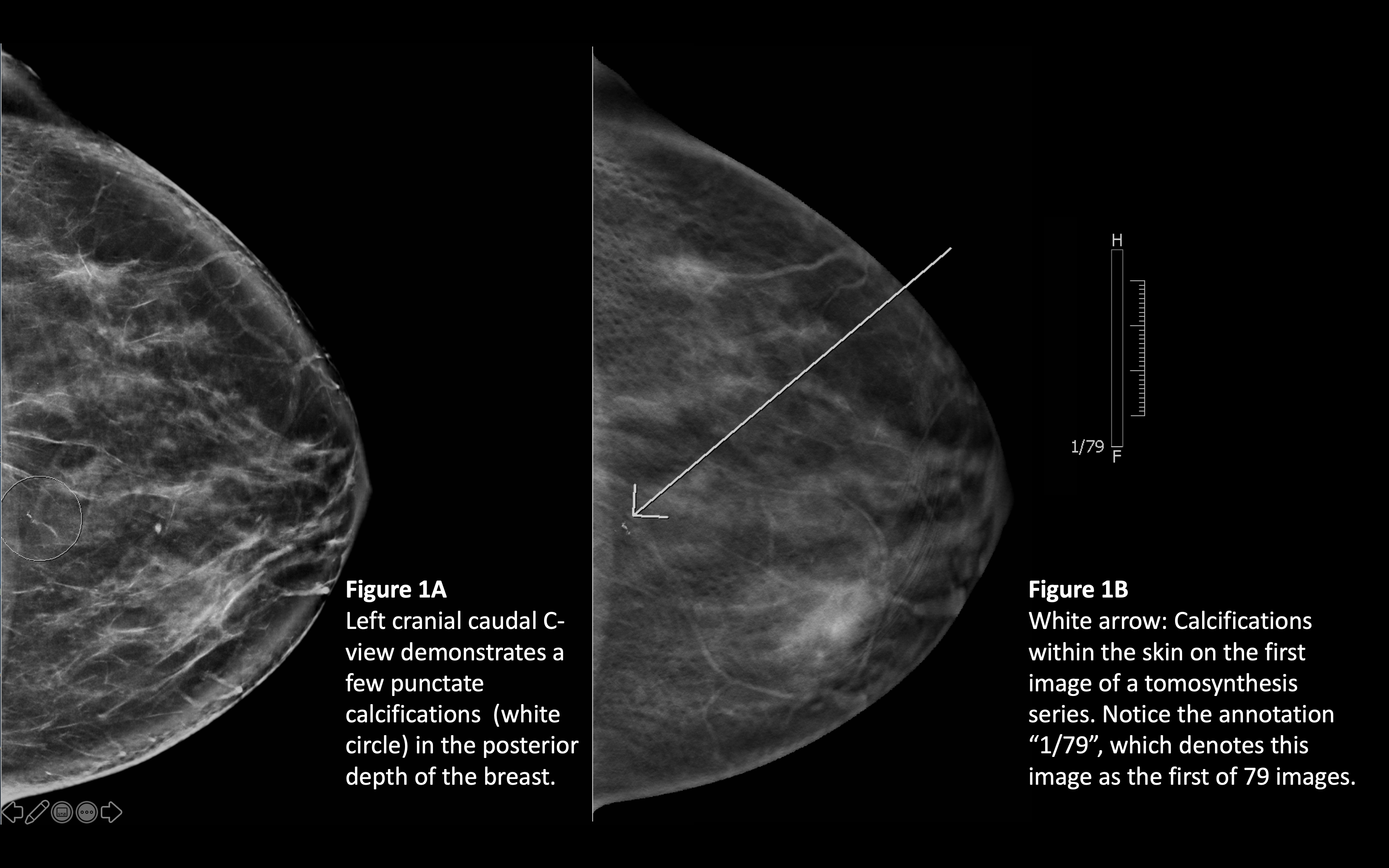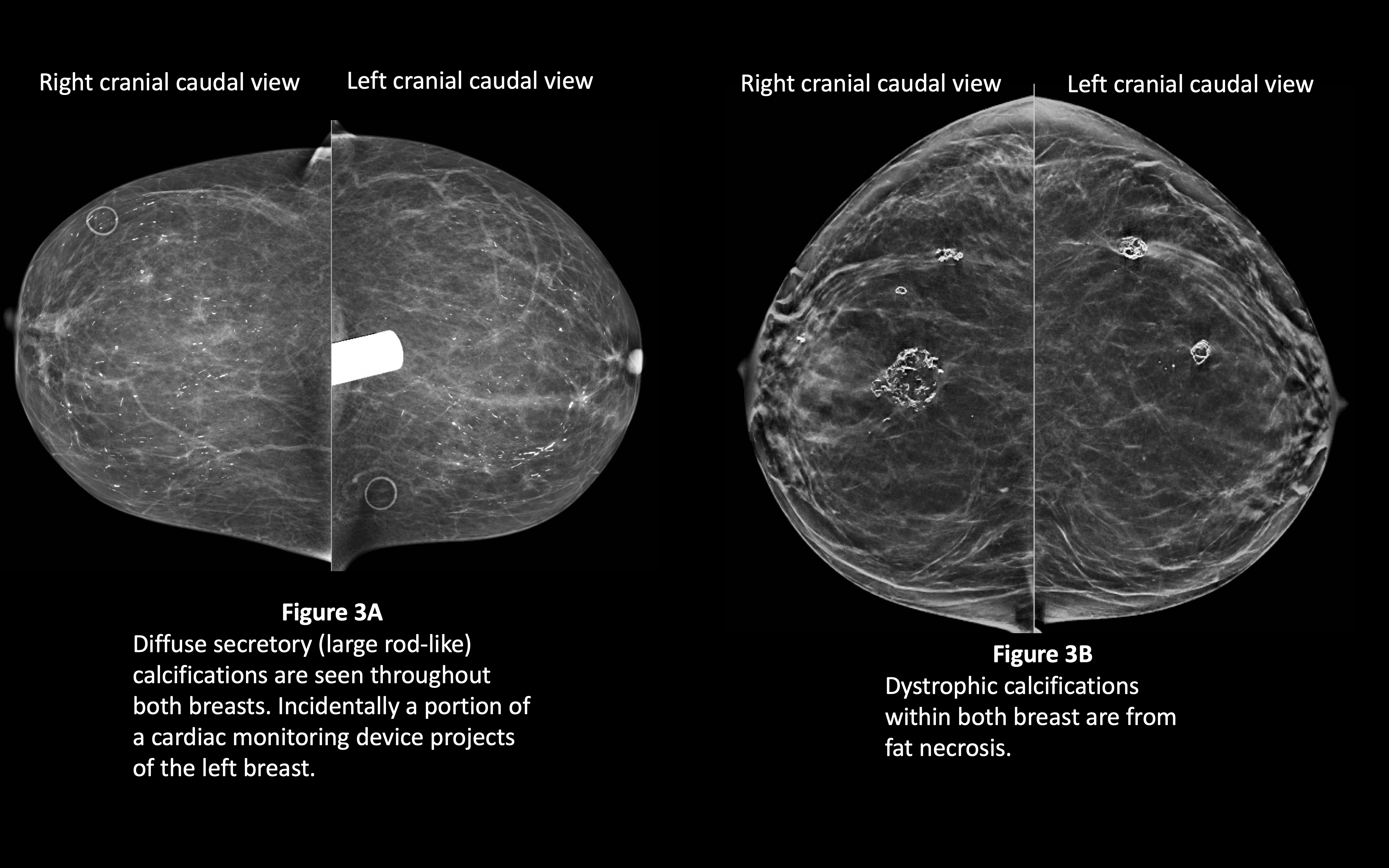WONDERFUL! Why Does Calcification Occur In The Breast
Other times calcification indicates that. It is not known what causes calcifications to develop in breast tissue but they are not caused by eating too much calcium or taking too many calcium supplements.
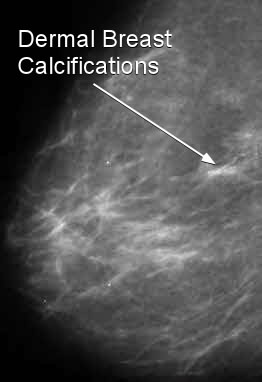
Dermal And Epidermal Breast Calcifications Moose And Doc
Most often breast calcifications are benign.

Why does calcification occur in the breast. Your radiologist can examine the calcifications and determine whether or not they are linked to a deeper problem. Sometimes they form because of other benign changes in the breast such as a fibroadenoma or breast cyst. They are seen on mammograms of about half of all women over age 50.
The skill and experience of the technicians and doctors helps them to read the different patterns and decide which might. An old injury to the breast. Breast injuries cell secretions infections and inflammation can all cause breast calcifications.
The calcifications associated with breast cancer are usually quite small often described as microcalcifications. Calcifications are common and in most cases they are harmless. However they also are seen.
Breast calcifications or small calcium deposits in breast tissue are signs of cellular turnover essentially dead cells that can be visualized on a mammogram or observed in a breast biopsy. The plaque is usually soft to begin with but eventually tends to harden and become calcified. There are two types.
This happens because the calcium readily absorbs the X-rays. Breast calcifications are small deposits of calcium in the breast tissue that show up on mammograms as bright white specks or dots. Some research indicates that.
In cases of extensive tissue necrosis the inflammatory response leads to calcium chemo-attraction and healing with possible permanent calcification. They are usually found during a routine breast x-ray mammogram. They do not cause any symptoms and you cannot feel them.
Breast calcifications are a build up of calcium in breast tissue. In breast tissue calcification is a relatively common process characterized by the formation of calcium deposits. Possible causes of breast calcifications include.
These areas of calcium are called calcification. Breast calcifications are calcium deposits within breast tissue. Bio-prosthetic valves that are implanted in young patients as well as those on dialysis have a greater chance of calcifying earlier.
Cell secretions or debris. Calcium within the fluid of a benign cyst this is called milk of calcium. The natural stress on the valve from wear and tear can also lead to calcification and degeneration of the artificial valve.
Calcifications associated with a dilated milk duct. This can be caused by simple aging inflammation or by a foreign object in the tissue such as implants or sutures. Sometimes however they can be a sign of cancer.
Calcifications are more likely to develop after menopause. In addition blood vessel cells themselves sometimes convert into bone-forming osteoblasts producing extra calcium on the spot. They are usually due to benign not cancer changes that occur as part of aging.
Breast calcifications can also be a sign of early breast cancer a reason we radiologists pay close attention to all calcifications in the breast. No one really knows exactly why these valves calcify but 2 theories exist. Calcium can accumulate in the arterial plaque that develops after an injury to the vessel wall.
This type of calcification may be caused by. Breast calcifications are very common. They appear as white spots or flecks on a mammogram.
Breast calcifications are common on mammograms and theyre especially prevalent after age 50. The calcium itself does not cause cancer but it could be a signal of something happening in the breast tissue and in rare cases it can reveal early stage cancer 5. These calcifications cannot be felt during a normal breast exam so they are usually detected and diagnosed during a routine mammogram.
Calcifications can appear in the breasts ducts andor lobules these are called epithelial-related. Fibrocystic breast condition is also associated with breast calcifications. Calcifications are frequently found on mammograms and are especially common after menopause.
Calcifications are generally harmless and are often a result of aging breast tissue. Breast calcifications happen for a number of reasons. Smooth rod-like linear calcifications filling individual ducts often in both breasts can be a sign of mammary duct ectasia which occurs when the ducts that lead to the nipple get enlarged and fill with fluid.
Over a period of time blunt injury to the breast can lead to formation of calcifications in the breast. Although breast calcifications are usually noncancerous benign certain patterns of calcifications such as tight clusters with irregular shapes and fine appearance may indicate breast cancer or precancerous changes to breast. Small deposits of calcium in the breast tissue create breast calcifications.
Breast calcifications are small spots deposits of calcium in the breast. Previous injury or surgery to the breast fat necrosis Previous radiation therapy for cancer. But calcification also develops because of non cancerous changes in the breast.
Here are some of the many causes of benign breast calcifications. The natural changes in the breast show up as breast calcifications. Most breast calcifications are benign but clusters of calcium deposits can suggest early breast cancer.
Often calcifications happen as time goes on as a result of aging. Similarly chronic infection of sebaceous glands and mastitis can also cause breast calcifications. This build up is called calcium deposits or calcifications.
Inflammation due to infection. Read on to learn about the different types of calcification including their symptoms causes and. 5 Things You Need to Know About Breast Cancer Symptoms.
Ductal carcinoma in situ DCIS Fibroadenoma. Calcifications with fat necrosis can happen as a result of surgery or radiation to the chest area.
Benign Breast Calcifications Article
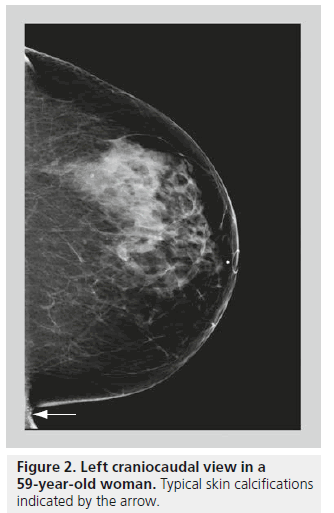
Mammography Of Breast Calcifications
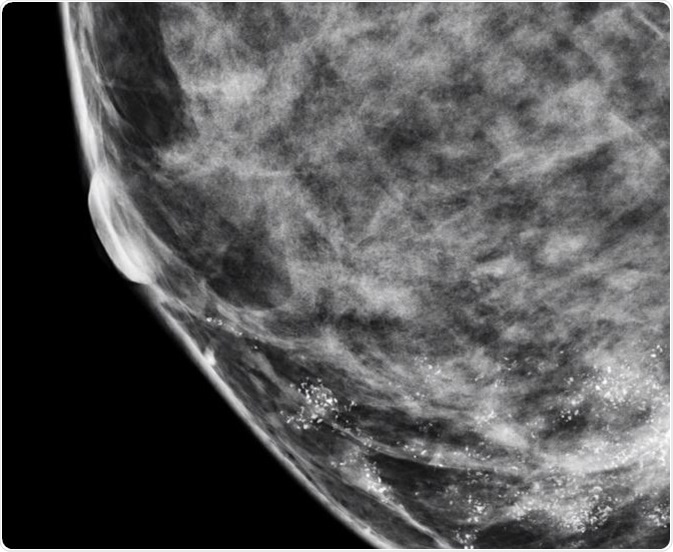
Microcalcifications In Breast Cancer

Breast Arterial Calcifications On Mammography And Coronary Artery Disease A New Screening Tool For Cardiovascular Disease International Journal Of Cardiology
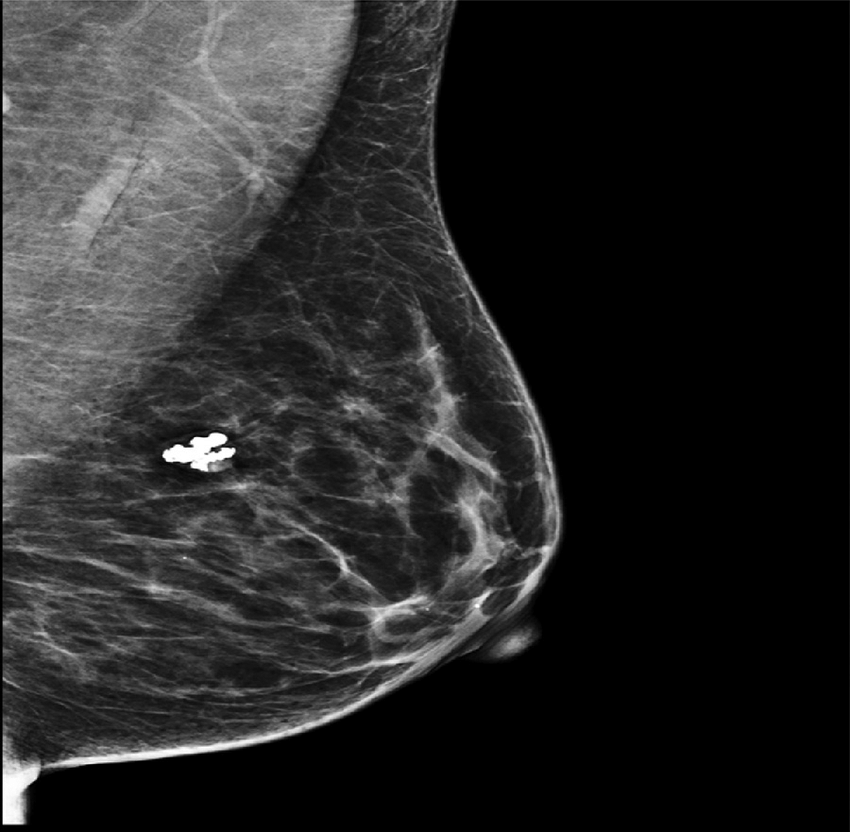
A Mammogram Of The Left Breast Showed A Left Breast Lesion With Download Scientific Diagram
Benign Breast Calcifications Article
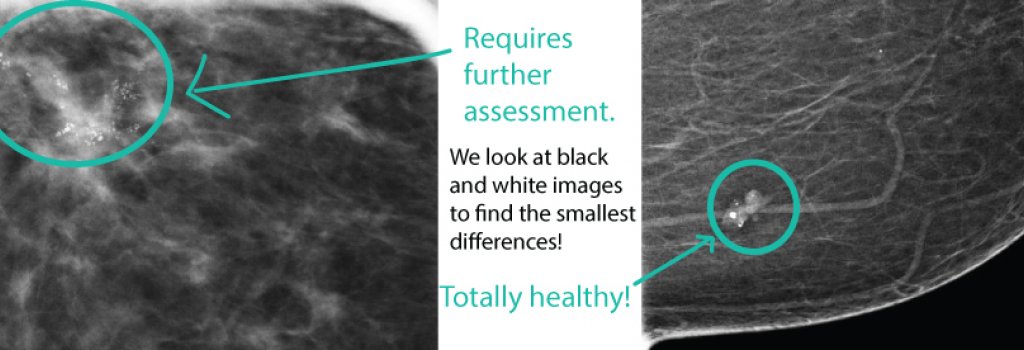
Let S Talk About Breast Calcifications Worry Or Not Diagnostic Imaging Centers Kc
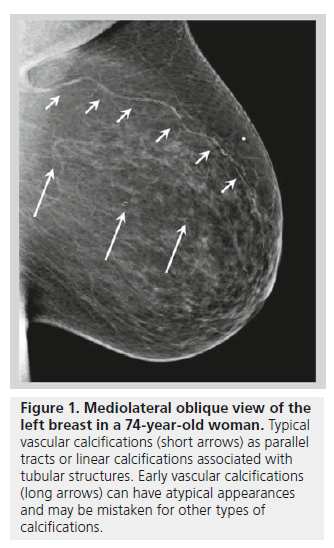
Mammography Of Breast Calcifications
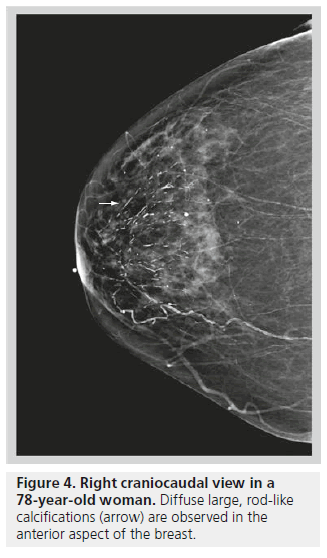
Mammography Of Breast Calcifications

Breast Calcifications What Are They And Should You Worry
Calcified Grade 3 Solid Dcis In A 33 Year Old Woman With A Palpable Download Scientific Diagram
Calcifications Made Easy Radiology Key

Breast Calcification Everything You Need To Know Jioforme

Breast Calcifications Radiology Key

Benign Breast Conditions Breast Calcifications Healthed

Post Lumpectomy Breast Calcifications Can Original Tumor Features Assist In Determining Need For Biopsy Clinical Imaging
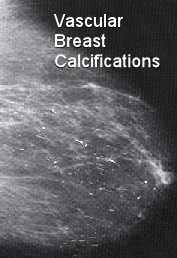
Vascular Breast Calcifications Are Benign

Breast Calcifications Part 1 Of 2 Eurorad
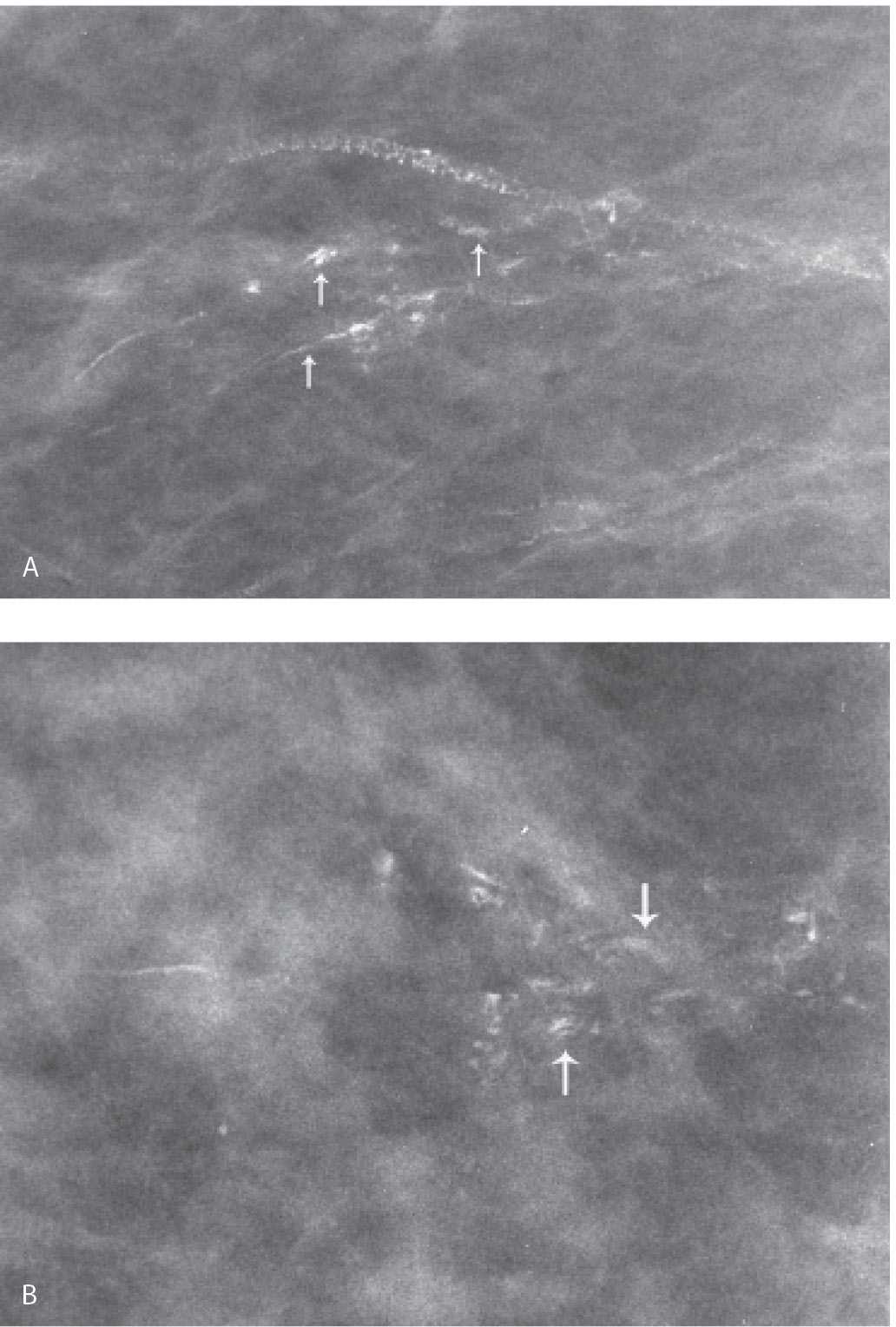
Breast Calcifications Radiology Key
